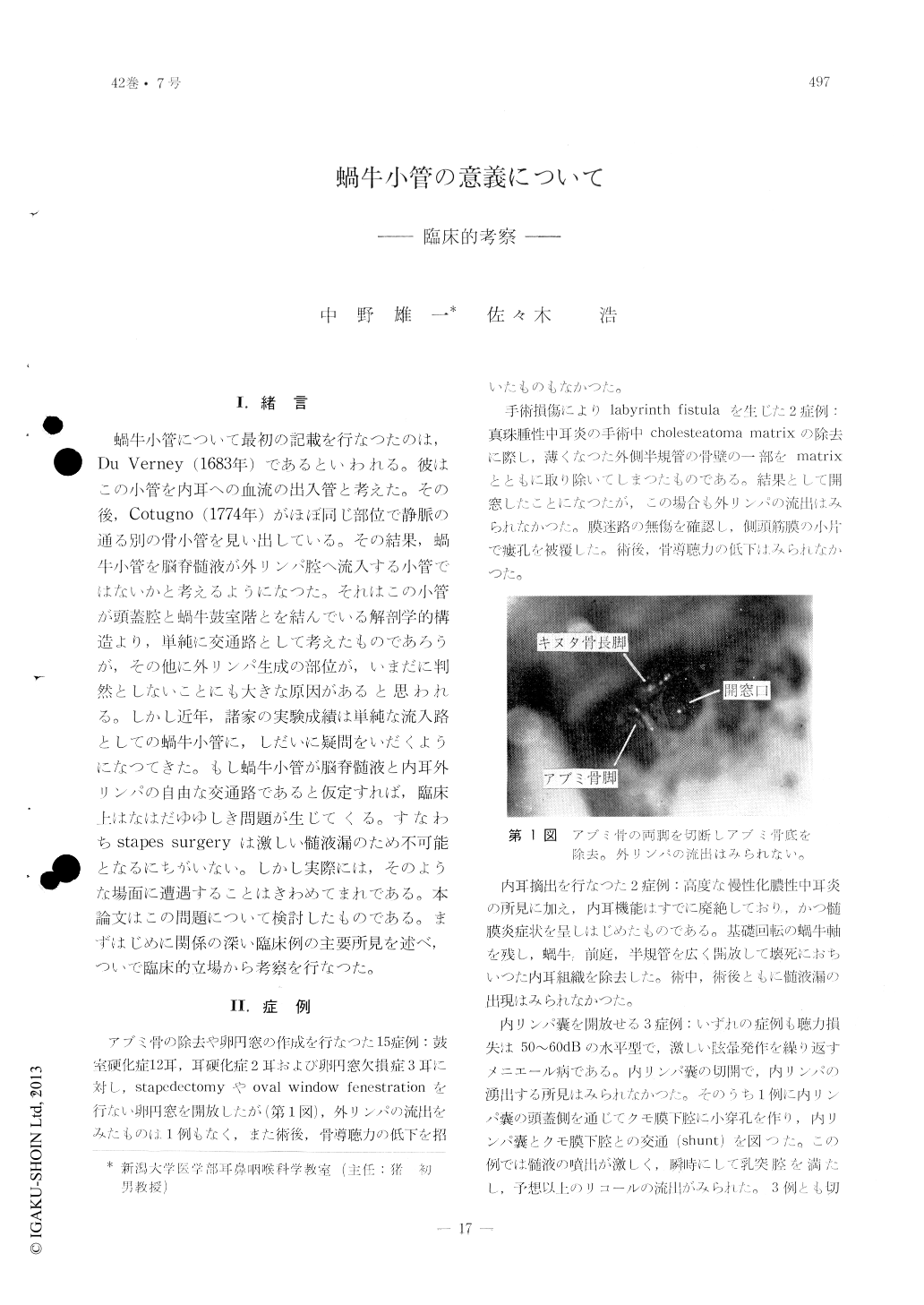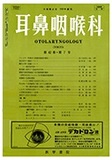Japanese
English
- 有料閲覧
- Abstract 文献概要
- 1ページ目 Look Inside
Ⅰ.緒言
蝸牛小管について最初の記載を行なつたのは,Du Verney(1683年)であるといわれる。彼はこの小管を内耳への血流の出入管と考えた。その後,Cotugno(1774年)がほぼ同じ部位で静脈の通る別の骨小管を見い出している。その結果,蝸牛小管を脳脊髄液が外リンパ腔へ流入する小管ではないかと考えるようになつた,それはこの小管が頭蓋腔と蝸牛鼓室階とを結んでいる解剖学的構造より,単純に交通路として考えたものであろうが,その他に外リンパ生成の部位が,いまだに判然としないことにも大きな原因があると思われる。しかし近年,諸家の実験成績は単純な流入路としての蝸牛小管に,しだいに疑問をいだくようになつてきた。もし蝸牛小管が脳脊髄液と内耳外リンパの自由な交通路であると仮定すれば,臨床上はなはだゆゆしき問題が生じてくる。すなわちstapes surgeryは激しい髄液漏のため不可能となるにちがいない。しかし実際には,そのような場面に遭遇することはきわめてまれである。本論文はこの問題について検討したものである。まずはじめに関係の深い臨床例の主要所見を述べ,ついで臨床的立場から考察を行なつた。
The excessive flow of perilymph during stapedectomy or fenestration procedure was not seen in all of the 17 cases. In the case of Meniere's disease operated by endolymphatic subarachnoid shunt operation, however, cerebrospinal fluid gushed out from a small opening made in the meningeal dura through the medial wall of the sac filling the mastoid cavity.
On the basis of these clinical observations the pattency and the function of the cochlear aqueduct were discussed. The authors conclude that the cochlear aqueduct is not an open channel between the perilymphatic space and the spinal fluid system. However, the physiological significance of the aqueduct is yet to be found.

Copyright © 1970, Igaku-Shoin Ltd. All rights reserved.


